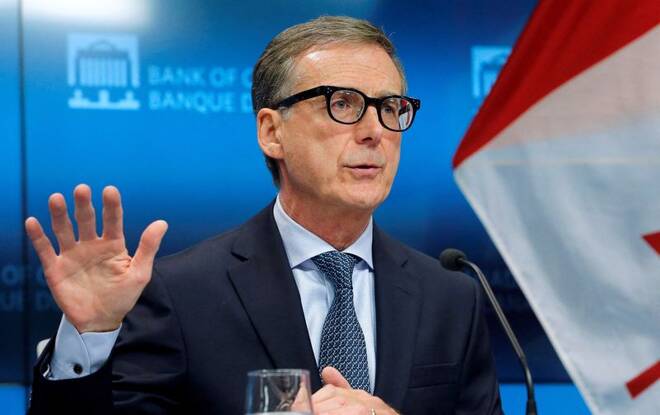Advertisement
Advertisement
Bank of Canada focus on more timely inflation data lowers overshoot risk
By:
By Fergal Smith TORONTO (Reuters) - As the Bank of Canada considers raising interest rates at a slower pace, it is focusing on inflation measures that are more timely than typically observed, which could help it avoid tightening beyond the level needed to subdue price pressures.
By Fergal Smith
TORONTO (Reuters) – As the Bank of Canada considers raising interest rates at a slower pace, it is focusing on inflation measures that are more timely than typically observed, which could help it avoid tightening beyond the level needed to subdue price pressures.
Inflation tends to be reported on a year-over-year basis to smooth out fluctuations that occur in shorter-term measures. But as price pressures show signs of peaking, the BoC’s move to consider the most recent data could help it fine-tune an endpoint for the rise in its policy rate that does the least possible damage to the economy, say analysts.
Some forecasters expect Canada’s economy to dip into recession next year along with a downturn in global activity.
When consumer prices are compared to levels that prevailed three months ago – so-called three-month measures of inflation – key gauges of core inflation that the BoC tracks look more encouraging than they do when presented on a year-over-year basis, charts the central bank included in its economic update on Oct. 26 show.
The charts show three-month CPI-median and CPI-trim measures cooling to a pace of roughly 4% in September compared to the level of about 5% that has persisted for 12-month rates in recent months.
That’s well above the 2% midpoint of the BoC’s inflation target range, but the step in the right direction could be a sign that rate hikes are beginning to slow underlying price pressures.
The headline rate, which includes more volatile items such as energy, has already come off its peak.
“It’s not enough to bet the farm on, but it’s encouraging that these ‘super core’ measures of inflation are moving closer to the top of the Bank of Canada’s 1% to 3% target range for inflation,” said Royce Mendes, head of macro strategy at Desjardins.
“The fact that the central bank is now paying attention to these measures too means that there’s a lower probability of overtightening relative to what’s needed to control price pressures.”
Persistent inflation
Politicians, unions and even some economists worry that the BoC could raise interest rates too aggressively, producing a toxic combination of higher borrowing costs and inflation that is too much for consumers and small businesses to bear.
The central bank has hiked its policy rate by 350 basis points in just seven months, including multiple oversized hikes, or rate increases in excess of a quarter of a percentage point, to a 14-year high of 3.75%.
Money markets are expecting that rate to peak at about 4.50% over the coming months, a higher endpoint than previously expected following a blowout domestic jobs report on Friday.
“Looking at monthly or three-month changes gives you a better idea of current price momentum and how inflation is responding to changes in interest rates,” said Josh Nye, senior economist at Royal Bank of Canada.
Twelve-month rates include price growth that occurred much earlier in the year, economists explain.
Inflation is likely to be more persistent after it spread from goods prices into slower-moving items, such as wages and services. Still, the BoC has opened the door to slowing the pace of tightening to more normal steps of 25 basis points.
“This is the sort of chart that people will often look at to motivate more dovish approaches,” said Andrew Kelvin, chief Canada strategist at TD Securities.
“The implication certainly is that it (inflation) will continue to decelerate.”
(Reporting by Fergal Smith; Editing by Paul Simao)
About the Author
Reuterscontributor
Reuters, the news and media division of Thomson Reuters, is the world’s largest international multimedia news provider reaching more than one billion people every day. Reuters provides trusted business, financial, national, and international news to professionals via Thomson Reuters desktops, the world's media organizations, and directly to consumers at Reuters.com and via Reuters TV. Learn more about Thomson Reuters products:
Did you find this article useful?
Latest news and analysis
Advertisement
